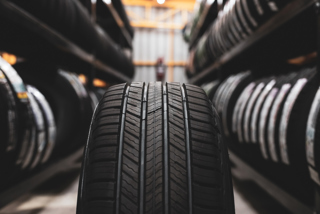By Richard Peak, director of Nextbase
Year-on-year, technology continues to develop at pace, both in our cars and on our roads.
Some advancements provide obvious benefits and solutions to old problems, while others seem to cause problems of their own.
Fleet managers in particular have to tread a fine line in being able to adapt to what may feel like a constant change.
For fleets, it’s important to keep up when comes to utilising technology. But how can they make sure that they are making the right choices when it comes to using technology in their fleets?
Understanding the potential risks and benefits
Technology has become ubiquitous at every stage in our lives, and fleet is no exception.
It can offer a variety of benefits to managers, but it is not without its risks.
Drivers that may have become over-reliant on their technology to help with guidance on routes, or even attempting to get ahead of paperwork while behind the wheel are at risk of falling foul of this tricky balance.
The Government has recently rolled out legislation to monitor driving safety, issuing £200 fines to those using smartphones while driving, this famously can also apply to stationary vehicles, with a multitude of videos posted online by vigilante cyclists to cite one example.
It’s important to not fall into the trap of becoming complacent and make sure drivers give their full attention to driving.
Concerns of privacy and data security can also come into play. Data systems that help with route tracking are vulnerable to breaches and cyber-attacks.
It’s important that you factor in ways to monitor how you store this data through risk assessments to avoid breaches. How you analyse the data can also feel somewhat overwhelming, so it’s worth taking the time study the data carefully.
The best technology to deploy across your fleet are often no-brainers, perhaps providing you with an additional layer of safety when taking to the roads while saving you a lot of money on insurance rates if and when an accident occurs.
Technology such as telematics and dashcams fit this description, but not everything is so clear cut.
Understanding the technology available to your fleet can be a challenge within itself. Not everyone may be on board with swift change.
Easing drivers into any new procedures in the way your fleet runs is a good way forward.
Establishing this in regular training sessions so that your drivers are informed of any new changes is a forward-thinking approach to manage your fleet.
It’s worth considering the balancing act of trust you have in drivers to not only get the job done and deliver a quality service to your customer base but allow for technology to help them complete the task along the way.
It is also worth accepting that not every new gadget or software is going to revolutionise the way you operate overnight, and sometimes, the old ways of doing things are still best. At least until the next iteration is available.
Taking the right steps with new technology
With the foresight in the potential risks and the benefits of implementing more technology into your fleet, here are some ways that you can maximise the benefits.
An initial step is identifying the objectives you want to achieve by integrating the technology, whether that be cutting down on expenditure on fuel, saving on insurance premiums or just solely wanting your fleet to run just that more efficiently – setting out clear goals is paramount to guiding your decisions.
Assessing the capabilities of your fleet is also worth considering before taking the jump to investing in new technology.
When you do get to a stage of considering the newer tools on the market that can help with route optimisation and telematics for instance, it is always worth checking if this is a well-needed requirement, or if the tools you already have at your disposal work just as well.
This sort of thinking avoids what you might call “New Toy-ism”, and means that and new technology can really make a difference. After all, upgrading from an iPhone 14 to a 15 might not be a smart investment (especially if this is a yearly occurrence) but if you’re currently struggling along with a five-year-old iPhone X, you’re sure to notice the jump.
By taking these steps to evaluating the potential risks and benefits, you can approach things with more of an open mind and consider what sort of innovation that your fleet requires most.




















Login to comment
Comments
No comments have been made yet.